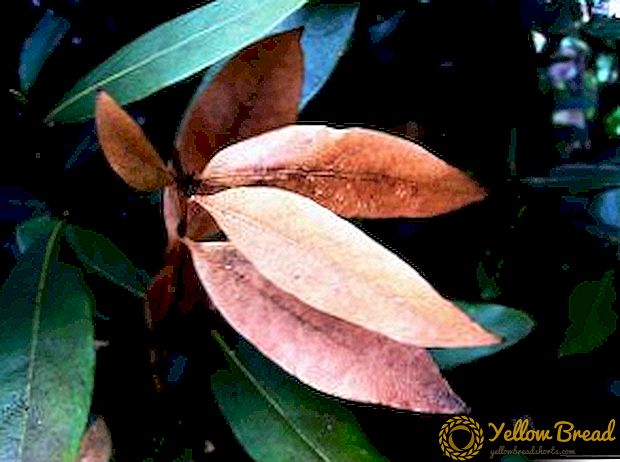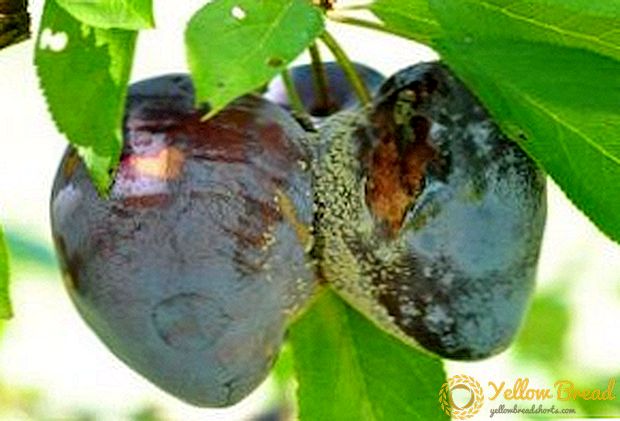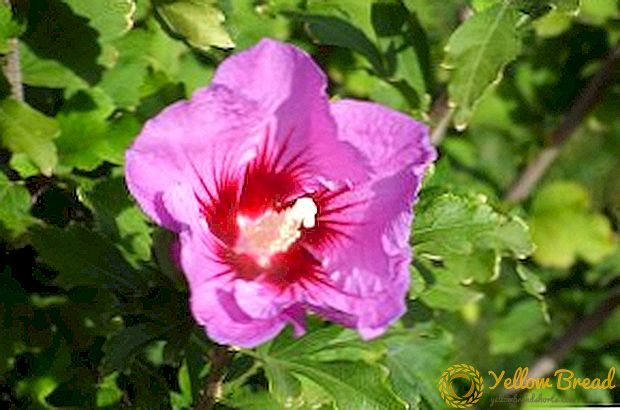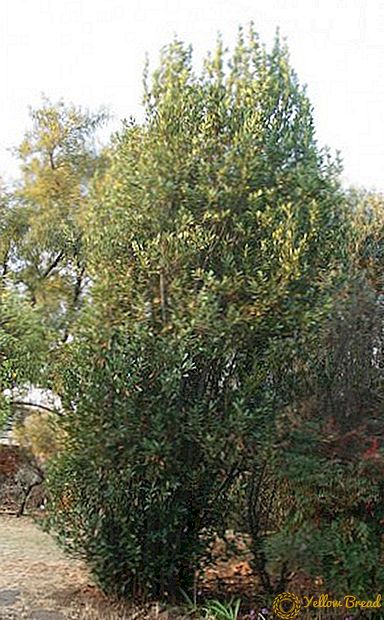 Laurel is the most famous evergreen tree or shrub that came to us from the Mediterranean. In ancient Greece, this beautiful plant was called Daphne, in honor of the nymph Daphne. Apollo, engulfed in love for her, wove a wreath from his laurel, which became his essential accessory, and the glory of the laurel as a symbol of triumph and victory came from here.
Laurel is the most famous evergreen tree or shrub that came to us from the Mediterranean. In ancient Greece, this beautiful plant was called Daphne, in honor of the nymph Daphne. Apollo, engulfed in love for her, wove a wreath from his laurel, which became his essential accessory, and the glory of the laurel as a symbol of triumph and victory came from here.
We have the same plant is the best and favorite kitchen spice. Indeed, without laurel, it is impossible to cook delicious homemade soup, soup or borscht and, of course, flavored main dishes. It has become a familiar ingredient when harvesting vegetables for the winter and pickles.
This indispensable plant can be grown quite easily at home. Laurel is very unpretentious to growing, and for its normal growth will require quite a bit of effort. If we can grow laurel at home from seed or other means, it will not only be useful as a spice, but it will be a spectacular home ornamental plant..
- Laurel: a description of the spice plant
- Is it possible to grow laurel in room conditions
- Prerequisites for laurel tree
- Location and light
- Air temperature and humidity
- Requirements for the soil for successful growth
- How to plant laurel, laurel tree breeding methods
- Sowing seeds
- How to plant laurel division bush
- Laurel cutting
- How to care for a laurel tree
- Watering and feeding plants
- Laurel tree pruning
- Diseases of the laurel tree and their treatment
Laurel: a description of the spice plant
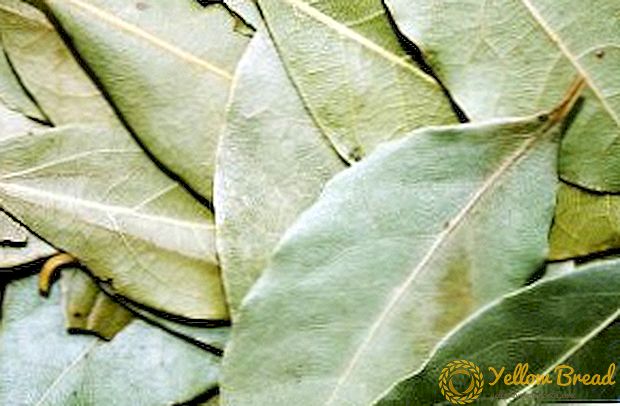 In nature, a laurel can be both a tree and a very tall shrub, 9-11 m high. Its trunk can reach 40-45 cm. When growing laurel at home it grows only up to 2 m. Its bark and shoots are smooth, mostly brown. .
In nature, a laurel can be both a tree and a very tall shrub, 9-11 m high. Its trunk can reach 40-45 cm. When growing laurel at home it grows only up to 2 m. Its bark and shoots are smooth, mostly brown. .
The leaves of the laurel are solid, straight, bare, short-stem and entire, reaching a length of up to 20 cm and a width of up to 5 cm. They are dark green above and lighter on the bottom. They have a very pleasant spicy aroma. The flowers of the laurel are small, yellowish and same-sex, appear in inflorescences at the ends of the branches 6-12-staminate and 2-3-pistillate.
Is it possible to grow laurel in room conditions
Laurel when grown at home is a noble plant, it is very hardy and unpretentious in care. Therefore, absolutely anyone can grow it at home.
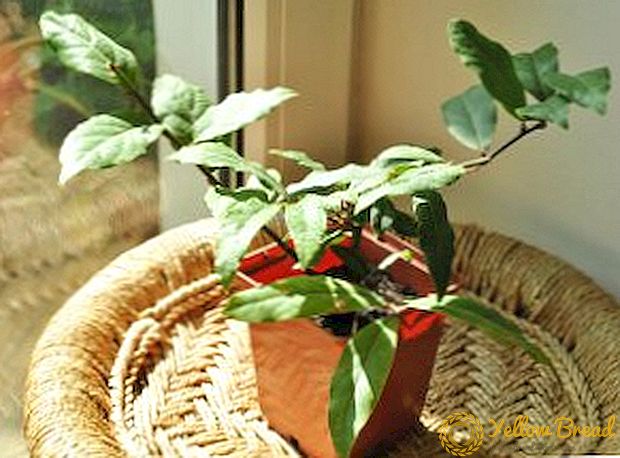 But you still should not start the development, care for indoor laurel at least minimal, but extremely necessary. With proper cultivation, you will have an excellent plant that will thank you for the efforts spent on its development, lush healthy foliage.
But you still should not start the development, care for indoor laurel at least minimal, but extremely necessary. With proper cultivation, you will have an excellent plant that will thank you for the efforts spent on its development, lush healthy foliage.
Prerequisites for laurel tree
In room conditions for landing the best laurel noble. For the healthy development of the laurel tree, in addition to standard care, timely cropping of the crown and spraying will be needed to make the laurel feel comfortable. Laurel, like any houseplant, requires attention to disease and pest control.
Location and light
A laurel tree needs a well-lit place with diffused light. Since this plant is shade-tolerant, it can be kept in the shade, but when growing in diffused light, the laurel may bloom, and the bush itself will be thicker than when growing in a shaded place.
In the hot season, you should avoid constant exposure to direct sunlight. In summer, the laurel can be safely taken out to the garden or to the balcony. The apartment pots can be put on the floor near the windows, in the hallway or hall. The plant should be ventilated regularly, but do not create permanent drafts.
Air temperature and humidity
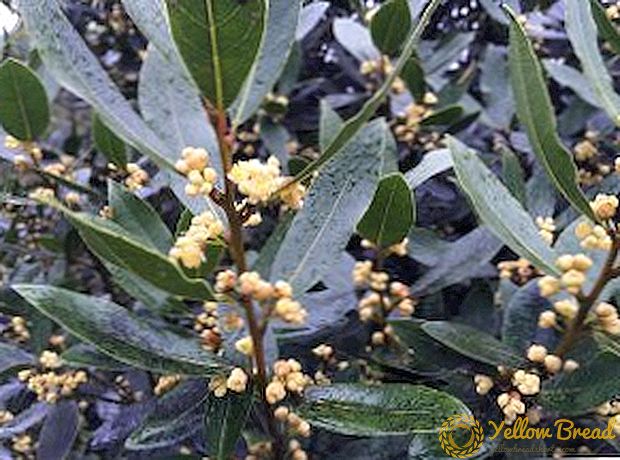 In summer, the plant will feel great on the street, it is unpretentious, but fresh air will not be superfluous to it. The most comfortable temperature for laurels is 15-20 ° C. In the summer, a bush twice a week needs to spray the leaves to maintain a subtropical climate.
In summer, the plant will feel great on the street, it is unpretentious, but fresh air will not be superfluous to it. The most comfortable temperature for laurels is 15-20 ° C. In the summer, a bush twice a week needs to spray the leaves to maintain a subtropical climate.
Starting in the fall, the plant needs rest. The rest period for laurel at home is artificially created from October to March. You should put the laurel in a place with low light and humidity. The temperature should be no higher than +10 ° C and not lower than -5 ° C.
Requirements for the soil for successful growth
Laurel leaf saplings, after we can grow them from seeds, will need to be transplanted. When transplanting seedlings into a pot, it is imperative to fill in a good drainage layer of expanded clay. Laurel likes moist soil, but it is impossible to prevent stagnation of water, this can lead to the death of the plant.
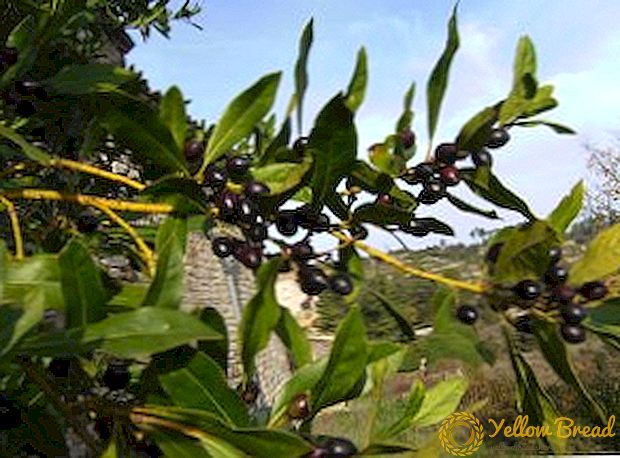 The soil should be light, for the laurel any variant of the universal soil found on sale is suitable. The ground for planting laurel on its own can be prepared from two parts of sod land, one part of leafy land, and partly fine, well-washed river sand. Before planting the seedling soil can be heated in the oven at a sufficient temperature for disinfection. Too high temperatures during heating should be avoided, so as not to destroy all the useful microflora.
The soil should be light, for the laurel any variant of the universal soil found on sale is suitable. The ground for planting laurel on its own can be prepared from two parts of sod land, one part of leafy land, and partly fine, well-washed river sand. Before planting the seedling soil can be heated in the oven at a sufficient temperature for disinfection. Too high temperatures during heating should be avoided, so as not to destroy all the useful microflora.
How to plant laurel, laurel tree breeding methods
Bay leaf - an indispensable ingredient in the kitchen of any hostess. It belongs to inexpensive spices, but it is much more pleasant when the leaflets of this plant are used in their own hands in the dish. Consider how you can grow Lavrushka from seeds, cuttings and dividing the bush house.
Sowing seeds
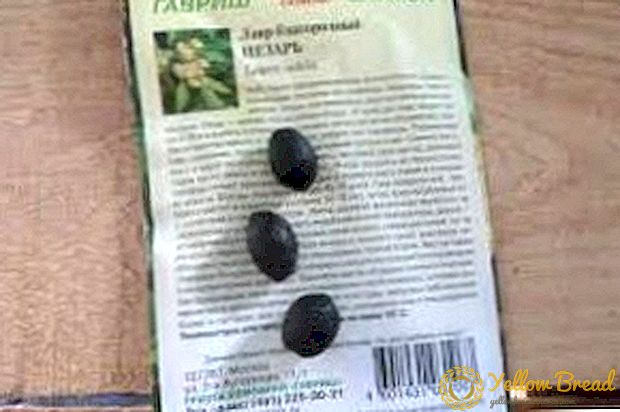 In order to grow a laurel tree as best and as good as possible, it should be planted from seeds brought from the south. The best time to start sowing is mid-February, early March. Laurel seeds should be planted 1 cm deep in the prepared soil. Soil temperature should be approximately equal to 20 ° C. In this case, the seeds will ascend in 3-4 months.
In order to grow a laurel tree as best and as good as possible, it should be planted from seeds brought from the south. The best time to start sowing is mid-February, early March. Laurel seeds should be planted 1 cm deep in the prepared soil. Soil temperature should be approximately equal to 20 ° C. In this case, the seeds will ascend in 3-4 months.
Before planting laurel from seeds into the soil, the seeds can be kept in a solution of potassium permanganate for 3-5 days, this will speed up the process of their germination. After planting the seeds in the soil, the pot should be placed in a warm place, moisten well and cover it with polyethylene or glass.
Before the sprouts appear, you will need to remove the polyethylene from the pot in order to air it for at least half an hour a day. It is also necessary to monitor the soil moisture, it should be moderate, you should not allow the stagnation of water. In dry soil the seeds will die, and in too wet they will rot.
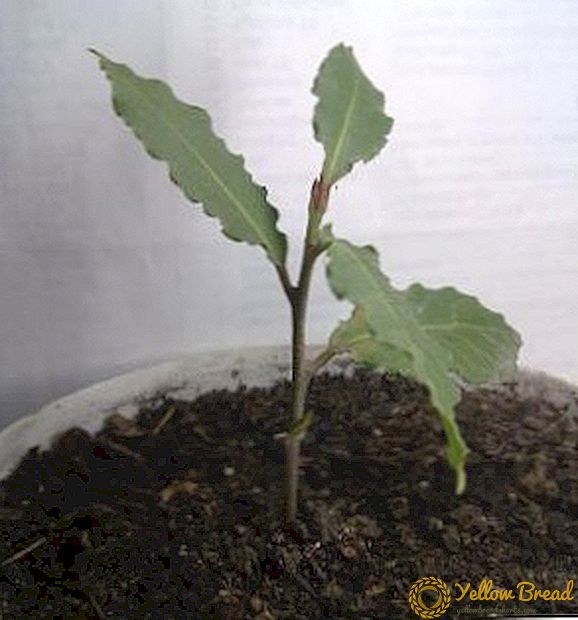 When the first green shoots appear, it is necessary to remove the cover from the pot, but still continue to monitor the soil moisture.When the first pair of leaves is formed on the sprouts, the seedlings need to be transplanted into a larger tank, 1 part of humus and ½ parts of peat can be added to the prepared soil.
When the first green shoots appear, it is necessary to remove the cover from the pot, but still continue to monitor the soil moisture.When the first pair of leaves is formed on the sprouts, the seedlings need to be transplanted into a larger tank, 1 part of humus and ½ parts of peat can be added to the prepared soil.After transplanting the seedling, the plant should be placed for 2-3 weeks in a dark place, not forgetting to maintain soil moisture. After 2-3 weeks, the seedling is moved to the light to start its active growth.
How to plant laurel division bush
It is necessary to divide the bay bush very carefully, on each branch separated from the main plant, a part of viable roots should remain. The division should be carried out only at the time when the laurel is in a period of rest, and this is from October to March. Divide laurel after 3-5 years of its growth. It is the first time to divide the bush into a small number of parts. Separating 2-3 branches from a three-year laurel will be enough.
Laurel cutting
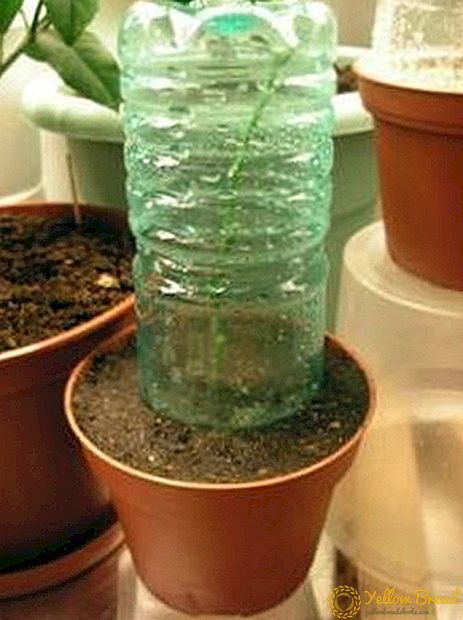 It is possible to propagate a laurel both with seeds and grafting, but it is much more difficult to do than to grow a laurel from seeds.Laurel cuttings are carried out in late spring and early summer. As cuttings use annual and matured shoots of laurel.
It is possible to propagate a laurel both with seeds and grafting, but it is much more difficult to do than to grow a laurel from seeds.Laurel cuttings are carried out in late spring and early summer. As cuttings use annual and matured shoots of laurel.
Cuttings 7–9 cm long are cut from the middle or lower part of the bush at an oblique angle. The bottom sheets of the cutting should be removed, and the top cut in half. Then the cuttings are planted in the substrate. The substrate is prepared from the same parts of the leaf soil and marsh moss, it is also recommended to add half of the sand.
At the bottom of the pot should be placed drainage of expanded clay, cover it with substrate and moisten it thoroughly. The cuttings are planted 2 cm deep and covered with polyethylene or an ordinary glass jar.
The sapling must be sprayed and ventilated every day. You should also ensure that the soil was constantly moist. With proper care, the cutting will root in 1-2 months.
How to care for a laurel tree
After planting laurel, the work does not end, because when growing, you need to regularly take care of its condition, water and fertilize the soil. And to form a decorative look it needs to be cut off.
Watering and feeding plants
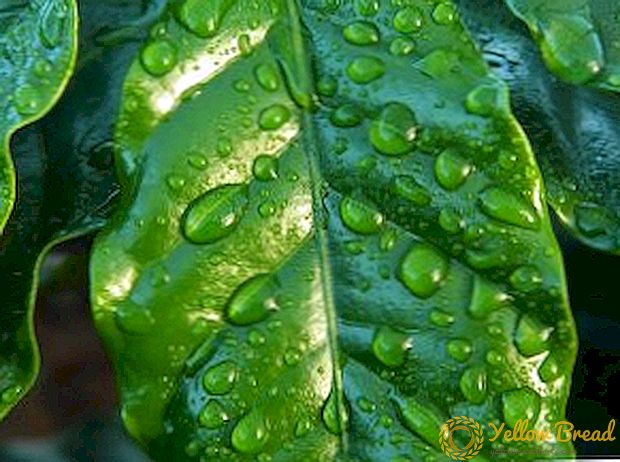 Watering laurel is important at any stage of its development. When planting seeds and for the development of roots in cuttings, you need to use warm, soft and defended water. Watering an adult plant should also be carried out with separated water, but one should distinguish the seasonal intensity of watering the tree.
Watering laurel is important at any stage of its development. When planting seeds and for the development of roots in cuttings, you need to use warm, soft and defended water. Watering an adult plant should also be carried out with separated water, but one should distinguish the seasonal intensity of watering the tree.
In spring and summer, laurel needs constant watering to avoid drying out the soil. In the fall, watering is reduced. In winter, it should be strictly limited, and if the laurel is in a room with a temperature below 6 ° C, then watering should stop altogether.
Young plants need to spray the leaves for better growth, adult plants are sprayed to remove dust on the leaves and crown of the tree. Feeding the laurel is needed not only at the time of his transplant, but also throughout his life span. An adult laurel is a slow-growing tree, so in order to avoid depleting a plant, you need to change the top 3-4 cm of the soil in which it grows.
As a top-dressing substrate should be used, based on one part of the soddy soil, one part of the leaf, half of the peat and half of the humus. Laurel is fed 1-2 times a month during the period of its active growth, it is not necessary to do this in the winter.Laurel is also good at organic feedings, which can be purchased at garden stores.
Laurel tree pruning
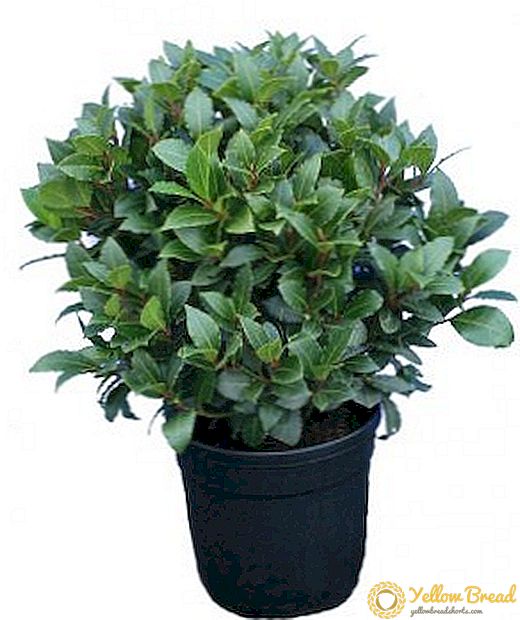 Trimming is done exclusively for decorative purposes. Since laurel is a noble plant, it very quietly tolerates pruning. At home, it can be beautifully cut in the shape of a ball or a pyramid. But still it is necessary to do it once, giving the bush the necessary shape, in the future, the laurel should be trimmed with shears to maintain it. It should be borne in mind that, although the laurel and calmly transfers pruning, this plant is slowly growing, so it will take a long time to restore the crown and grow.
Trimming is done exclusively for decorative purposes. Since laurel is a noble plant, it very quietly tolerates pruning. At home, it can be beautifully cut in the shape of a ball or a pyramid. But still it is necessary to do it once, giving the bush the necessary shape, in the future, the laurel should be trimmed with shears to maintain it. It should be borne in mind that, although the laurel and calmly transfers pruning, this plant is slowly growing, so it will take a long time to restore the crown and grow.
Diseases of the laurel tree and their treatment
In nature, laurel is a very disease-resistant plant, due to the abundant content of essential oils in its leaves, it repels many pests. But at home, diseases often affect the laurel tree, an important factor is the prevention of diseases and their timely treatment.
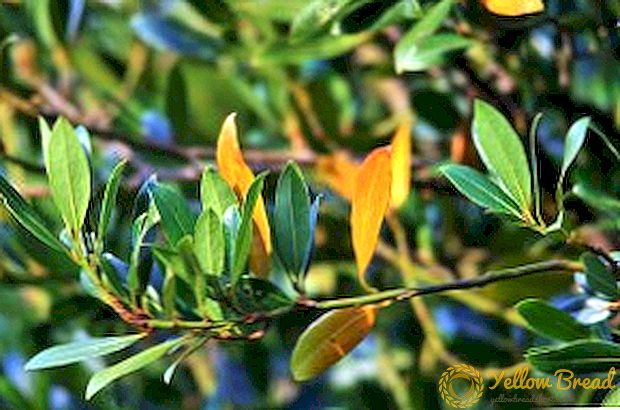 If the leaves of the laurel began to dry out - it is worth more regular spraying and watering. If you are pale - you need to exclude direct sunlight and add fertilizer. Sluggish leaves - this means that the temperature in which the laurel grows is too high or there is stagnant water in the pot.
If the leaves of the laurel began to dry out - it is worth more regular spraying and watering. If you are pale - you need to exclude direct sunlight and add fertilizer. Sluggish leaves - this means that the temperature in which the laurel grows is too high or there is stagnant water in the pot.
Pests that can attack laurel:
- The shield - affects the leaves, leaving a brownish-yellow dots. The affected plant must be urgently isolated from the rest. With the shield can be fought with such drugs as "Aktellik" and "Aktara". From the available tools fit vodka and garlic juice, which wipe the leaves. The bottom layer of soil should be urgently replaced.
- Mealybug - small pest 5 mm long. Its sign is the appearance of white sticky mucus on the plant. Abundantly affected plants die. To get rid of it, the affected areas should be washed with soapy water, and the bush itself should be treated with insecticide.
- Spider mite is a very small insect, it is hard to notice it. A white bloom forms a web between a branch and a leaf. To prevent its occurrence, plants should be regularly sprayed and moistened. If a weak lesion of laurel is found, it is sufficient to wash it with soapy water; if it is strongly affected, use insecticides.
- Black fungus - infects the leaves of the plant, leaving a rusty color. On the development of the plant has absolutely no effect, only spoils its appearance. You can get rid of it, if you wipe the leaves with a weak solution of insecticide with the addition of baking soda.
